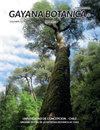Variation in Growth Response of Coastal Dune-Building Grass Species Ammophila Arenaria and Leymus Arenarius to Sand Burial
IF 0.5
4区 生物学
Q4 PLANT SCIENCES
引用次数: 4
Abstract
Abstract Ammophila arenaria and Leymus arenarius are dune-building grass species native to European seacoasts. The present study aimed to compare growth responses to the sand burial of A. arenaria and L. arenarius from coastal habitats of the Baltic Sea, when the intensity of sand accretion was relatively low under controlled conditions. Plants were grown from seeds collected from natural coastal habitats, transplanted into individual containers, buried in the sand at different depths in the rapid shoot elongation stage, and further cultivated (11 or 9 weeks) in an automated greenhouse. Burial in sand significantly stimulated the growth of shoots of A. arenaria, the effect was earlier at high burial intensities (46 and 60%) and was evident ten days after the start of treatment. Both shoot and root dry mass increased for plants buried at 13%; however, increased burial depth (37, 46 and 60%) resulted in a significant increase in root biomass. In comparison, shoot biomass decreased significantly at the highest burial intensity (60%). For L. arenarius, there was no direct dependence of shoot elongation rate on burial depth. There was a tendency for increased elongation growth and biomass allocation to leaf sheaths despite a decrease in total shoot mass. Most strikingly, root biomass decreased with sand burial in parallel with increased burial depth up to 21% intensity. In conclusion, although both grass species showed a positive shoot growth response to moderate sand burial intensity, differences in individual responses at the morphological and physiological level indicate the existence of different genetically based adaptation strategies.海岸造沙草砂砂草和羊草对沙埋的生长响应变化
沙羊草和沙羊草是原产于欧洲海岸的造沙草。本研究的目的是比较波罗的海沿岸生境在沙积强度相对较低的条件下,砂藻和砂藻的生长对沙埋的响应。从自然海岸生境收集种子,移栽到单独的容器中,在快速芽伸长阶段埋在不同深度的沙子中,并在自动化温室中进一步培养(11或9周)。沙埋对沙棘芽的生长有显著的促进作用,且在高掩埋强度(46%和60%)时效果较早,在处理10 d后效果明显。埋埋13%的植株茎、根干质量均增加;然而,增加埋深(37、46和60%)导致根系生物量显著增加。在最高掩埋强度(60%)下,地上部生物量显著下降。砂砂草的芽伸长率与埋深无直接关系。尽管总梢质量减少,但伸长生长和生物量分配给叶鞘的趋势增加。最显著的是,随着埋砂深度的增加,根系生物量呈平行下降趋势,埋砂强度达到21%。综上所述,尽管两种禾草对中等埋沙强度均表现出积极的幼苗生长响应,但在形态和生理水平上的个体响应差异表明存在不同的遗传适应策略。
本文章由计算机程序翻译,如有差异,请以英文原文为准。
求助全文
约1分钟内获得全文
求助全文
来源期刊

GAYANA BOTANICA
Agricultural and Biological Sciences-Plant Science
CiteScore
0.70
自引率
0.00%
发文量
8
审稿时长
6-12 weeks
期刊介绍:
The journal welcomes works carried out by scientists of all nationalities, and may be written in either English or Spanish. The journal receives works in systematic, taxonomy, floristic, ecology, physiology, morphology, development, conservation, cytology and phytochemical botany.
 求助内容:
求助内容: 应助结果提醒方式:
应助结果提醒方式:


